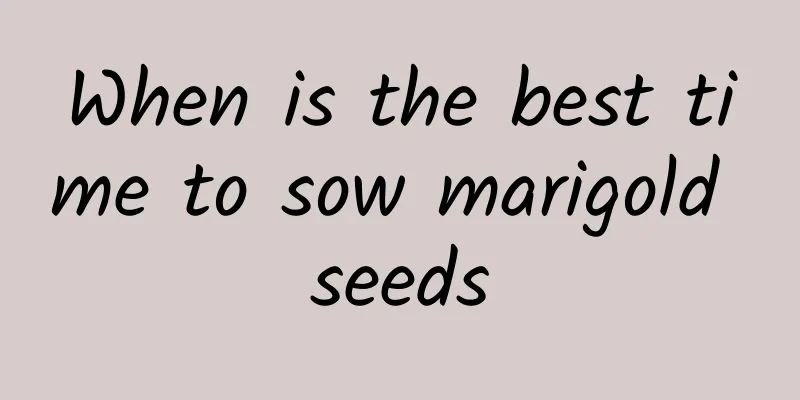When can white orchids be moved outdoors (when should white orchids be moved outdoors for maintenance)

When is the best time to move white orchids outdoors?White jasmine likes a warm growing environment and is not cold-resistant. When the temperature drops below 5 degrees in winter, it must be brought indoors to keep warm, otherwise it will easily get frostbite. The time to go out indoors in spring depends on weather conditions. When the daytime temperature is above 15 degrees and the nighttime temperature is above 6 degrees, March to April is the most suitable time to go out . If you take the plants out too early, they are prone to late spring cold weather, which is not conducive to growth. If you take them out too late, the indoor light is poor, which is not conducive to photosynthesis. Things to note when caring for white orchids outdoorsCaring for potted white jasmine is a meticulous job. The entire maintenance process includes pot selection, soil preparation, light and temperature, water and fertilizer management, pruning and other aspects, which are explained below one by one. 1. Flower pots with good air permeabilityThe roots of white orchids are afraid of water accumulation, so when choosing a flower pot, you should consider water permeability and air permeability. Nowadays, flower pots are made of many materials, such as plastic pots, ceramic pots, tile pots, porcelain pots, etc. Flower pots of different materials have different prices and air permeabilities, so you can choose according to your needs. 【 Flower pot suggestion 】 Porcelain basins have poor air permeability and are not recommended. Plastic basins are cheap, but their air permeability is average. You should choose ones with a large water outlet at the bottom. Ceramic basins and clay basins have the best air permeability and are ideal choices. 2. Well-drained soilThere are no strict requirements for the soil for ground-planted white jasmine, and most soils are acceptable. Since potted white orchids have limited potting soil, there are certain requirements for the soil. Generally, when preparing the soil, it is necessary to ensure good drainage so that water accumulation and root rot are not likely to occur. 【 Suggestions for soil preparation 】 The soil for white jasmine is generally garden soil, leaf mold, river sand or slag, which can be used after being fully mixed. The soil prepared with a variety of substrates has good drainage and is not prone to waterlogging and root rot. 3. Adequate lightingWhite jasmine is a positive flower and has certain requirements for light. Under sufficient light, white jasmine grows well, with large flowers and strong fragrance. Insufficient light will affect the growth of white jasmine, causing adverse phenomena such as yellowing leaves. It is important to maintain sufficient light when caring for white jasmine. 【 Lighting recommendations 】 White jasmine likes light. Potted white jasmine can be placed outdoors or on the rooftop in a sunny place for maintenance. Except for the need for shade in midsummer, it should be exposed to the sun as much as possible in other seasons. After bringing it indoors in winter, it should be placed under a window where it can get sunlight. White jasmine should not be kept in a dark environment for a long time. 4. Enter the room in time in winterWhite jasmine likes warmth and is afraid of both cold and heat. The most suitable growth temperature is 15-25 degrees. It will stop growing when the temperature drops below 5 degrees in winter, and will suffer frost damage when the temperature drops below zero degrees. The high temperature in summer is not conducive to the growth of white jasmine, so you should pay attention to shade and avoid the sun in summer. 【 Entry Suggestions 】 The temperature in different places in winter is different. In the warm places in the south, where the temperature is above 5 degrees in winter, you can spend the winter outdoors. In areas where the temperature is around zero degrees, you can stay warm indoors. In the north, you need to stay warm in a greenhouse or heating method in winter, and keep moisturizing after staying indoors. 5. Reasonable water and fertilizerWatering and fertilizing are very important tasks for potted flowers. Water and fertilizer management should be reasonably adjusted according to different seasons and different growth periods. On the one hand, sufficient water and fertilizer should be provided for the growth of white orchids, but at the same time, water and fertilizer should not be excessive, so as not to affect its growth. 【 Water and fertilizer recommendations 】 ① Watering After going out of the room in spring, the amount of watering should be gradually increased. The water demand peaks in summer, and the amount of watering gradually decreases after autumn. The water demand is less in winter. There is no strict fixed number for the frequency of watering. Generally, the principle of watering thoroughly when the soil is dry can be used. ② Fertilization It is advisable to apply thin fertilizer frequently when planting white orchids. During the growth period, apply thin fertilizer water every 7-10 days. Before flowering, you can add appropriate phosphorus and potassium fertilizers to promote flowering. In winter, you can bury organic fertilizers as base fertilizer. 6. Proper pruningWhite jasmine does not grow very fast and does not need to be pruned as often as roses, but pruning at least once a year is essential. The purpose of pruning is to maintain the shape of the white jasmine plant and make it compact. At the same time, for its growth consideration, the inner branches that are too dense and affect ventilation and light transmission are also thinned out. Pruning is usually done in spring or after flowering. |
Recommend
When is the best time to transplant Camellia sasanqua (Camellia sasanqua transplanting time and precautions)
The plant Camellia sasanqua is usually transplant...
Does ginger lotus prefer shade or sun?
Does ginger lotus prefer shade or sun? Ginger lil...
Cultivation methods and precautions of alpine banyan
The mountain banyan has broad and thick leaves, w...
What to do if the leaves of Christmas cactus turn purple
1. The temperature is too low (1) Reason: Because...
What to do if the rubber tree has bugs
Small white bugs in the soil of the rubber tree p...
Cultivation methods and precautions of white moon shadow succulent
The moon shadow succulent is a very easy-to-care-...
When is the best season to repot Sansevieria?
Tiger tail orchids have narrow, upright leaves wi...
How to grow Jade Plant
1. Soil When planting Jade Plant, the soil must b...
How many years does Hanfu apple bear fruit?
Introduction to Planting Hanfu Apple When plantin...
How to cultivate Cypripedium
1. Soil For breeding, soil with good air permeabi...
Cultivation methods and precautions of white chrysanthemum
How to grow white chrysanthemum temperature The s...
The main value of African hibiscus
All those values Ornamental value To understand t...
How to grow succulents
1. Plant in time If you have just bought the plan...
These 9 kinds of flowers are living vacuum cleaners that absorb oil fumes and remove formaldehyde. You must keep one in every room!
asparagus Function: It can not only purify the ai...
What is celery?
What is celery? Celery belongs to the Apiaceae fa...









